Needing to get from Tokyo to Shenzhen, I opted for an unusual routing: first, the inaugural United Tokyo Narita to Kaohsiung on July 11th, then Kaohsiung to Hong Kong.
Although this wasn’t the first time a U.S. carrier has had scheduled service to Kaohsiung, Taiwan’s second-largest city — Continental Micronesia served it until 1998, and Northwest flew there from Tokyo/Osaka up to 2001 — United swooped in to reignite the torch.
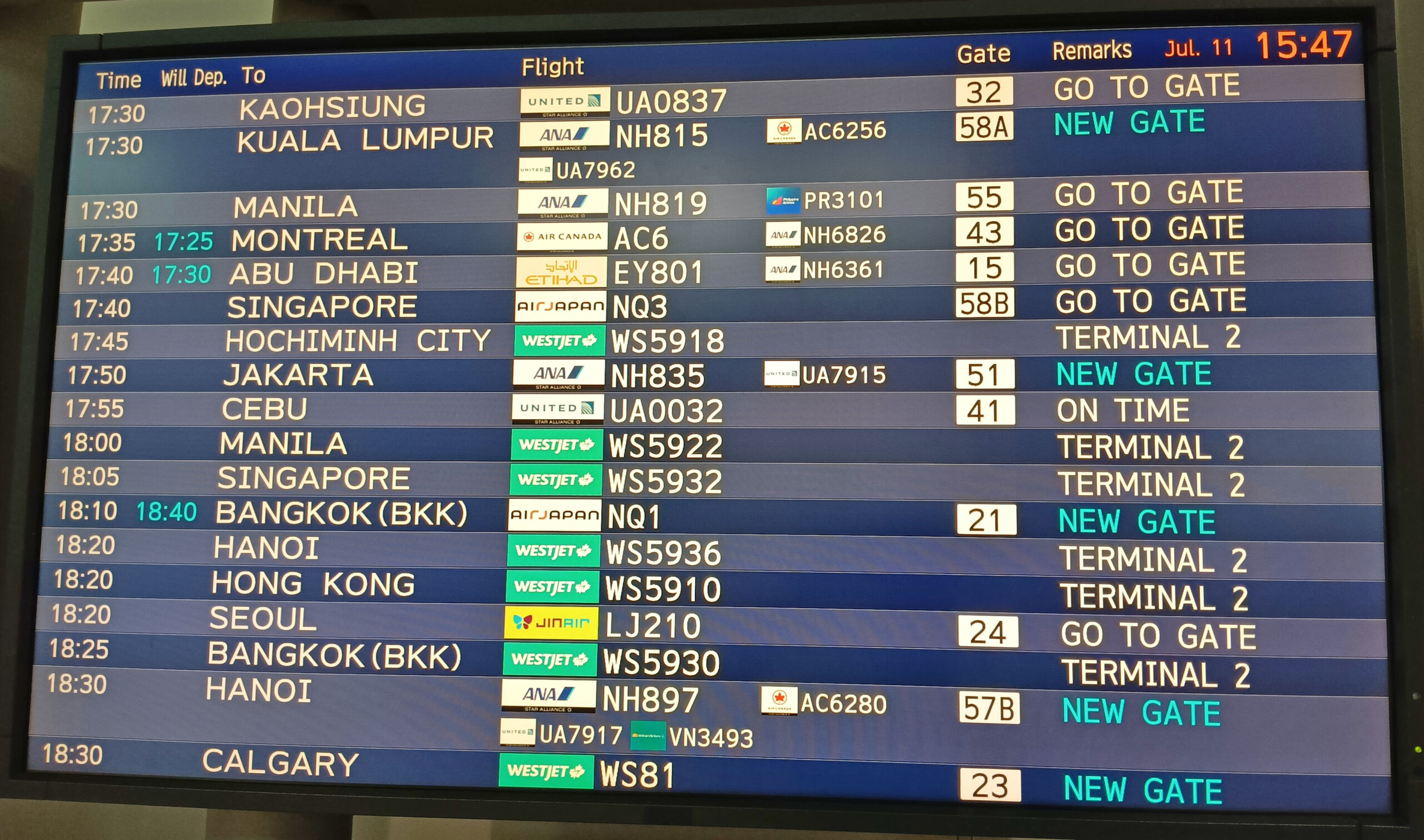
With continuing service to/from San Francisco, here is the low-down for the new daily roundtrip:
UA837 Tokyo Narita NRT 17:30 – Kaohsiung KHH 21:00
UA838 KHH 10:25 – NRT 15:15
all using a Boeing 737-800, with 166 seats in the back, and 16 up front
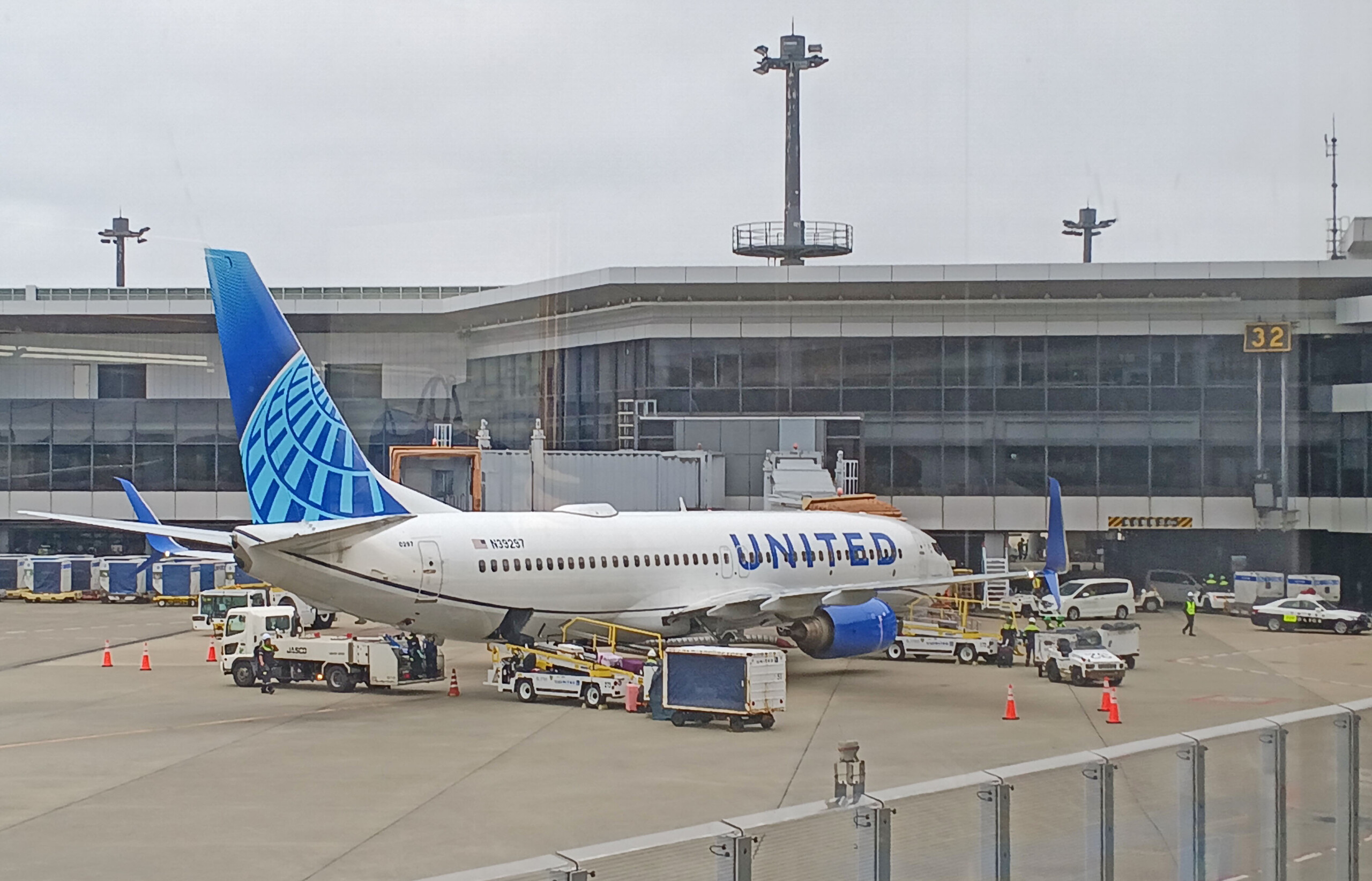
Now, let’s move on to the review.
Check-in (NRT Terminal 1)
I could have done the bag drop and saved some time, but Japanese airports airside are rubbish (i.e. not worth the rush). On that note, I could have gone to the United lounge, but didn’t have enough time to enjoy it, given that there was going to be a press conference at the gate.
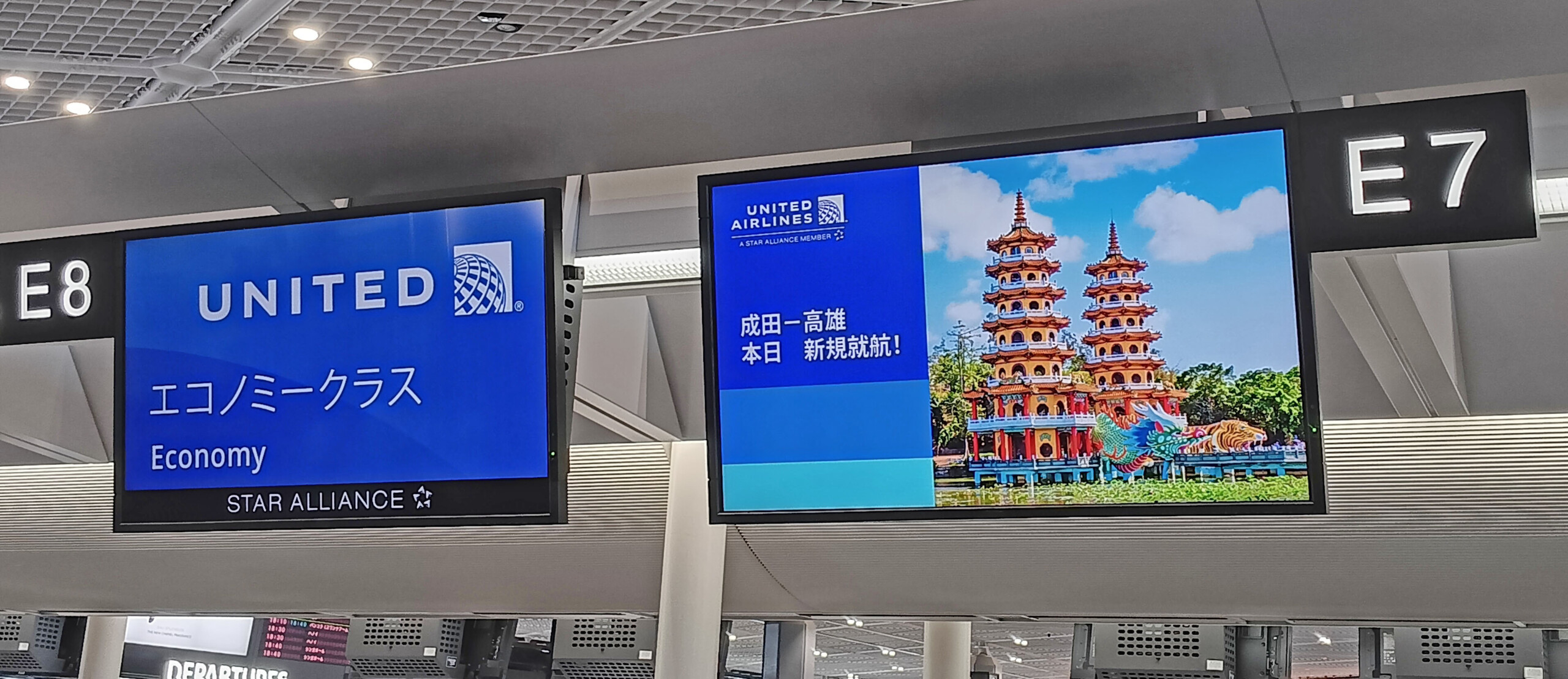
Anyway, I had a friendly chat with the check-in folks, who were amused by my jocular Japanese skills.
Security moved quite efficiently, and the e-gates to exit Japan were also quick.
There is a Priority Pass lounge, but Priority Pass basically treats Japan the same way as the United States, that is to say, it’s a lost cause. Then again, if I had the time, the United Club would’ve been the clear victor.
Gate and Press Conference
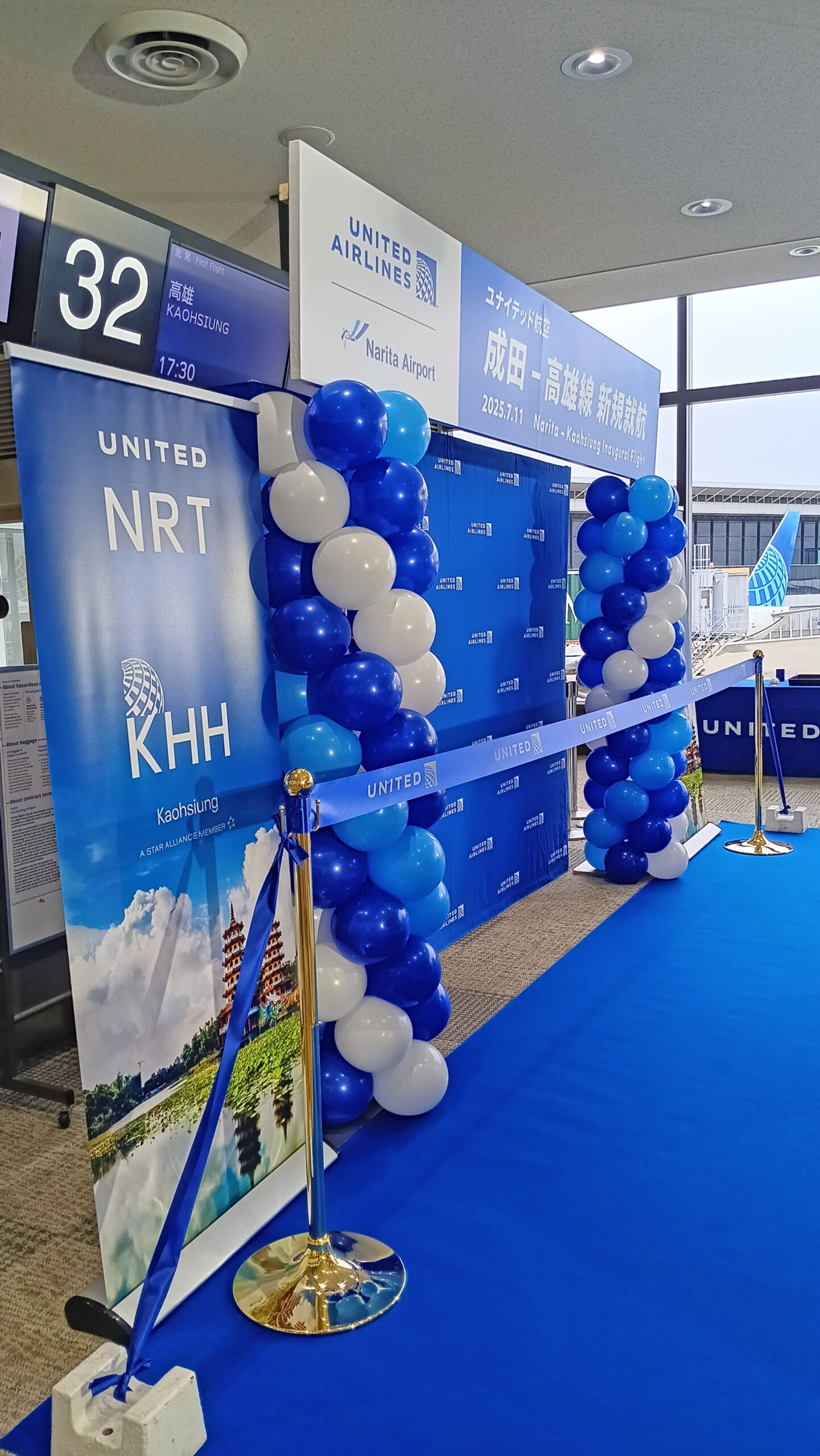
I’ve only flown two other inaugural routes, but those were much smaller carriers. In other words, I wasn’t quite sure what fanfare United had in store.
At around 16:15, a press conference involving both United flight crew, United Japan staff, and a Taiwan tourism representative began. Japanese-style fans called uchiwa were handed out to passengers, and I guess passers-by curious about the stanchions.
After the speeches, a ribbon cutting ceremony was performed.
Finally, after getting my ticket checked by the gate agent, some inaugural flight swag was provided:
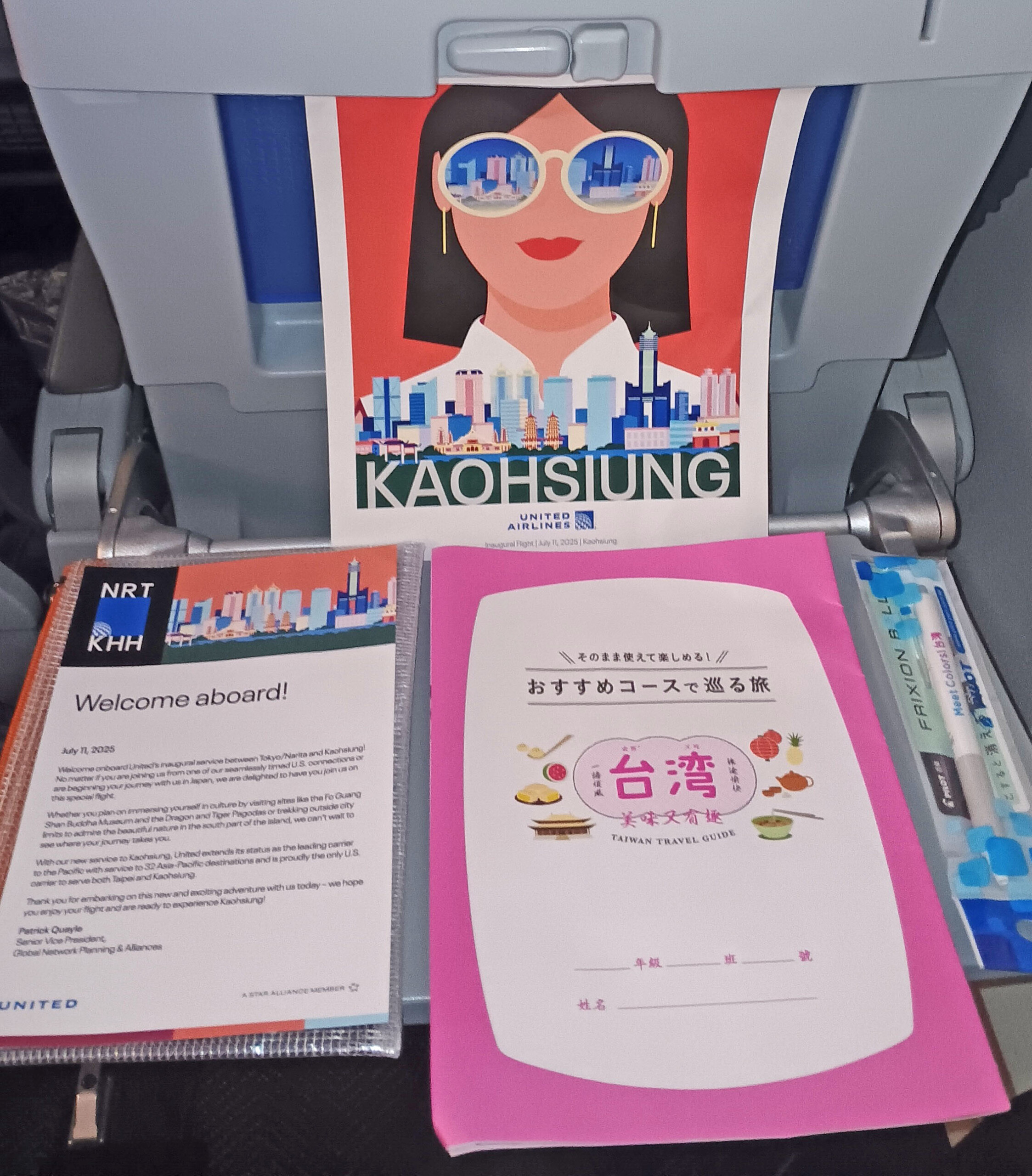
The pink guide to Taiwan was only in Japanese, but that worked fine for me. I find Japanese-language travel guides to be particularly detailed, both for food recommendations and attractions.
In-flight
The gate agent helped change my seat to an emergency exit window, but that wasn’t so auspicious in this case. The buttons to the tv didn’t work at all; I couldn’t even turn it off. Then, the tray table wouldn’t stay in place, so anything I put on it was extra unstable.
Of course, these things aren’t necessary for the plane to land, but if they’re part of the package, they should probably work.
Additionally, there was no wi-fi, which made the drink napkin that much more ironic:
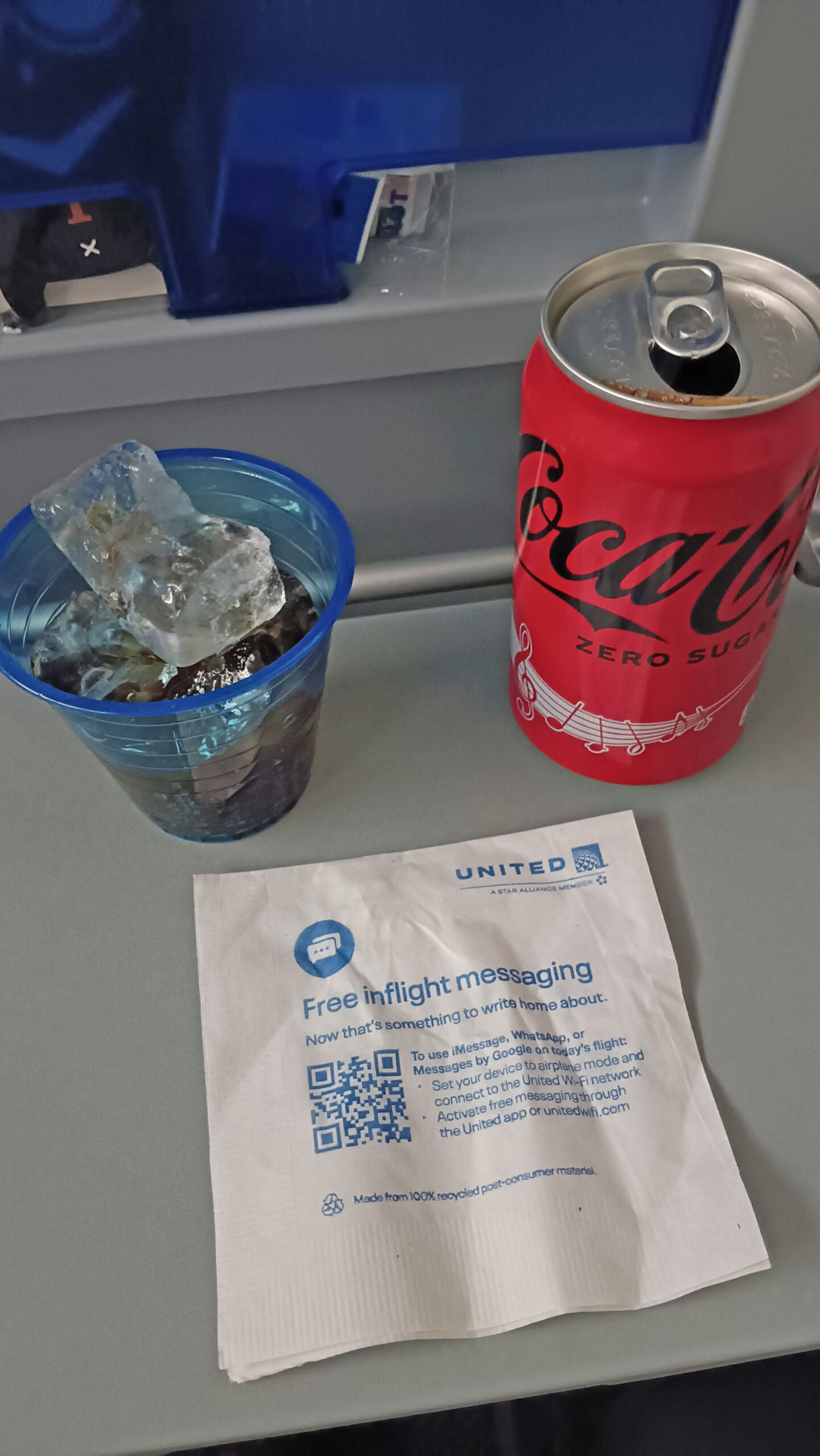
In spite of those issues, the Guam-based flight crew seemed buoyantly optimistic. On the other hand, one of the economy class flight attendants was very loud, nearly yelling at each passenger about the desired drink/meal (chicken katsu curry/pasta) order; it’s these voices that make me glad headphones are a thing.
Albeit delayed 20+ minutes by Narita air traffic control, the flight to Kaohsiung landed early.
Upon deplaning, local tourism officials handed out more pamphlets, and some mysterious pastry made with chocolate and salted egg.
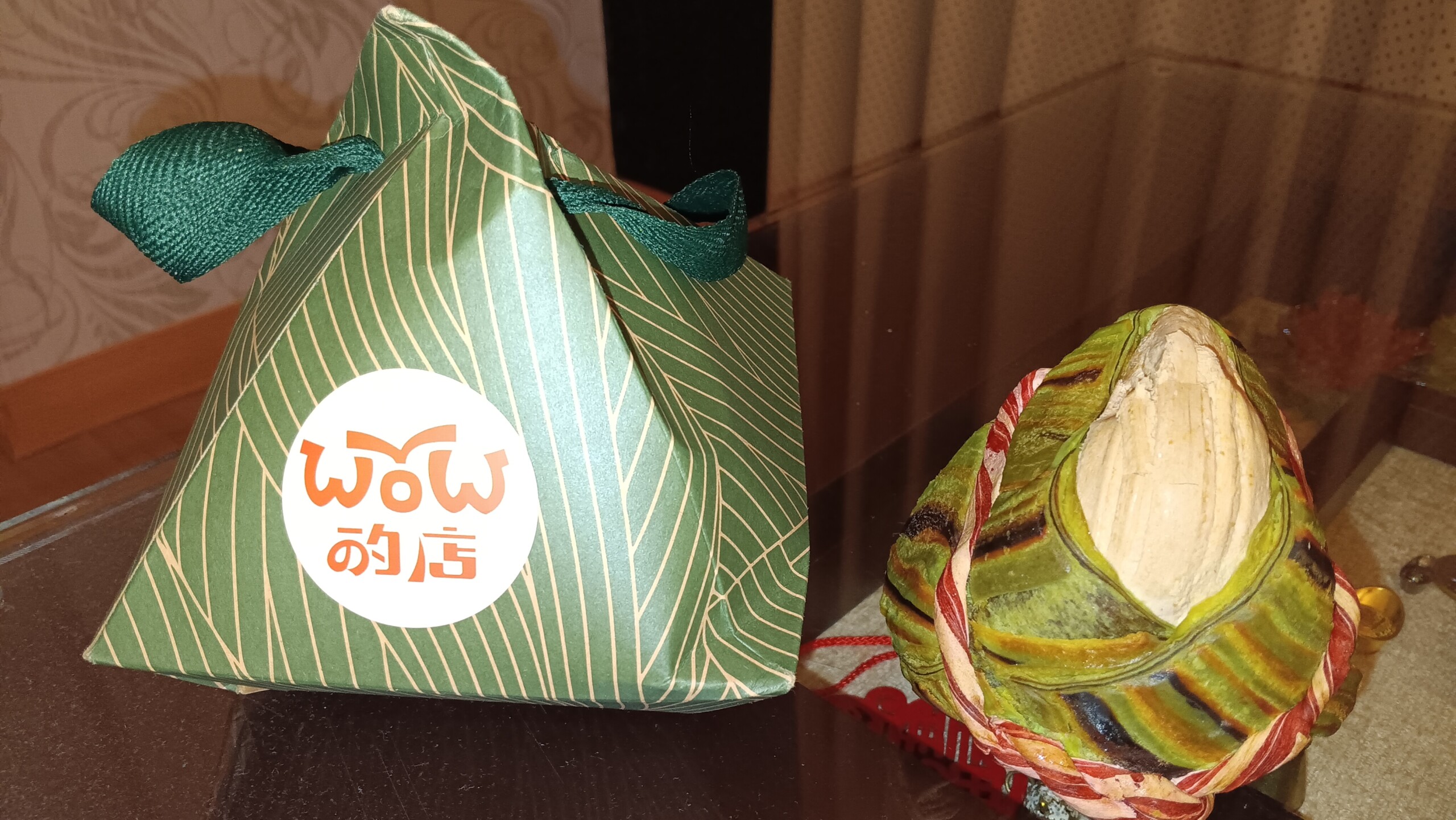
Kaohsiung immigration was fast (fill out this silly form first), my bag popped out a few minutes later, and soon I was on the metro heading downtown.
Kaohsiung
I had to leave the next day to Shenzhen, but I did get in some late night and early morning sightseeing. I have visited the city a few times since 2014, but like the rest of the country, the food has never drawn me in for longer stays.
Nevertheless, I did wander by a couple of places angling for a photo–
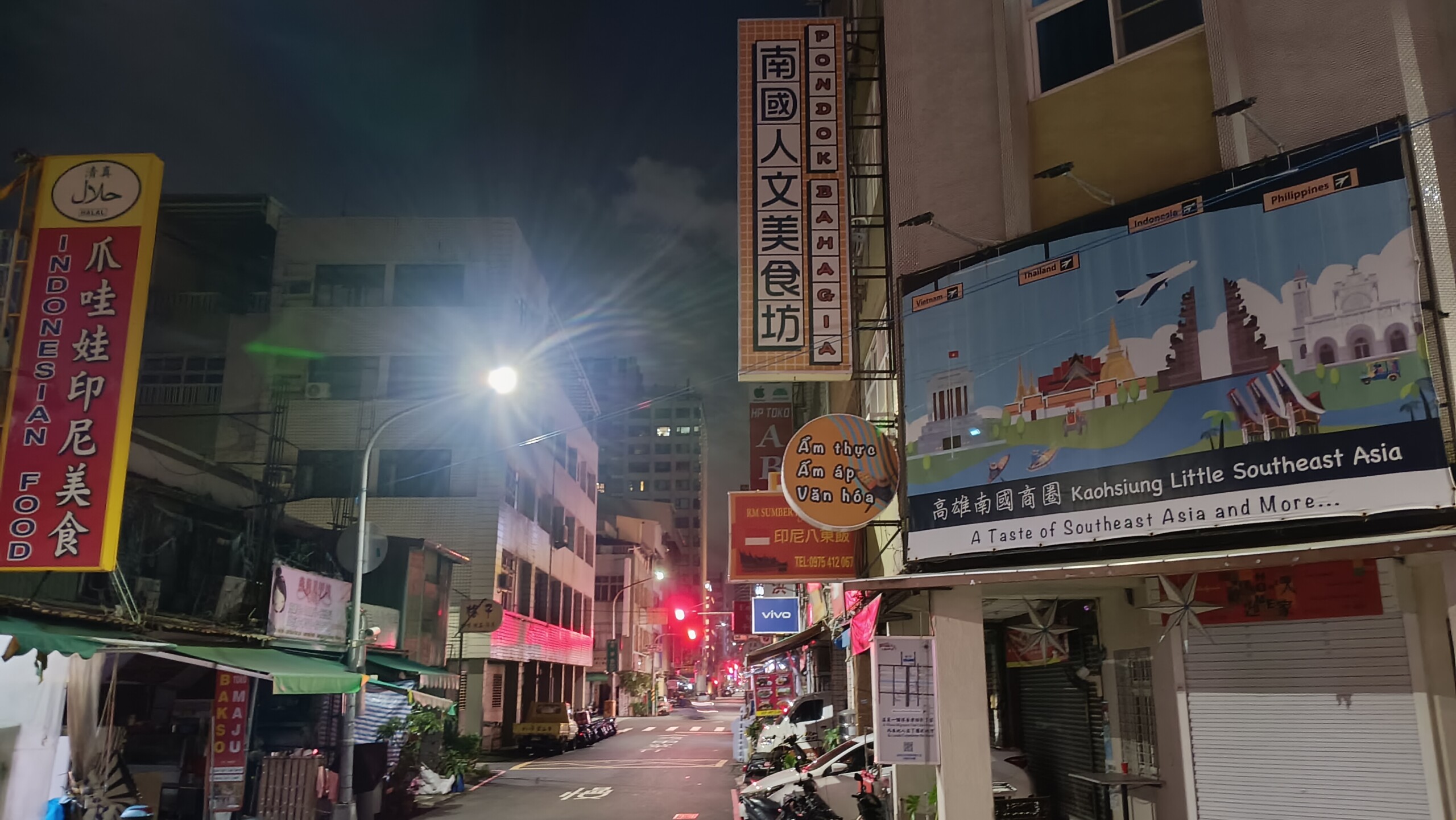
There are many guest workers from Southeast Asia in Kaohsiung. As a fan of Indonesian cuisines, I was looking forward to some sambal, alas it was too late for any of the places to to be open.
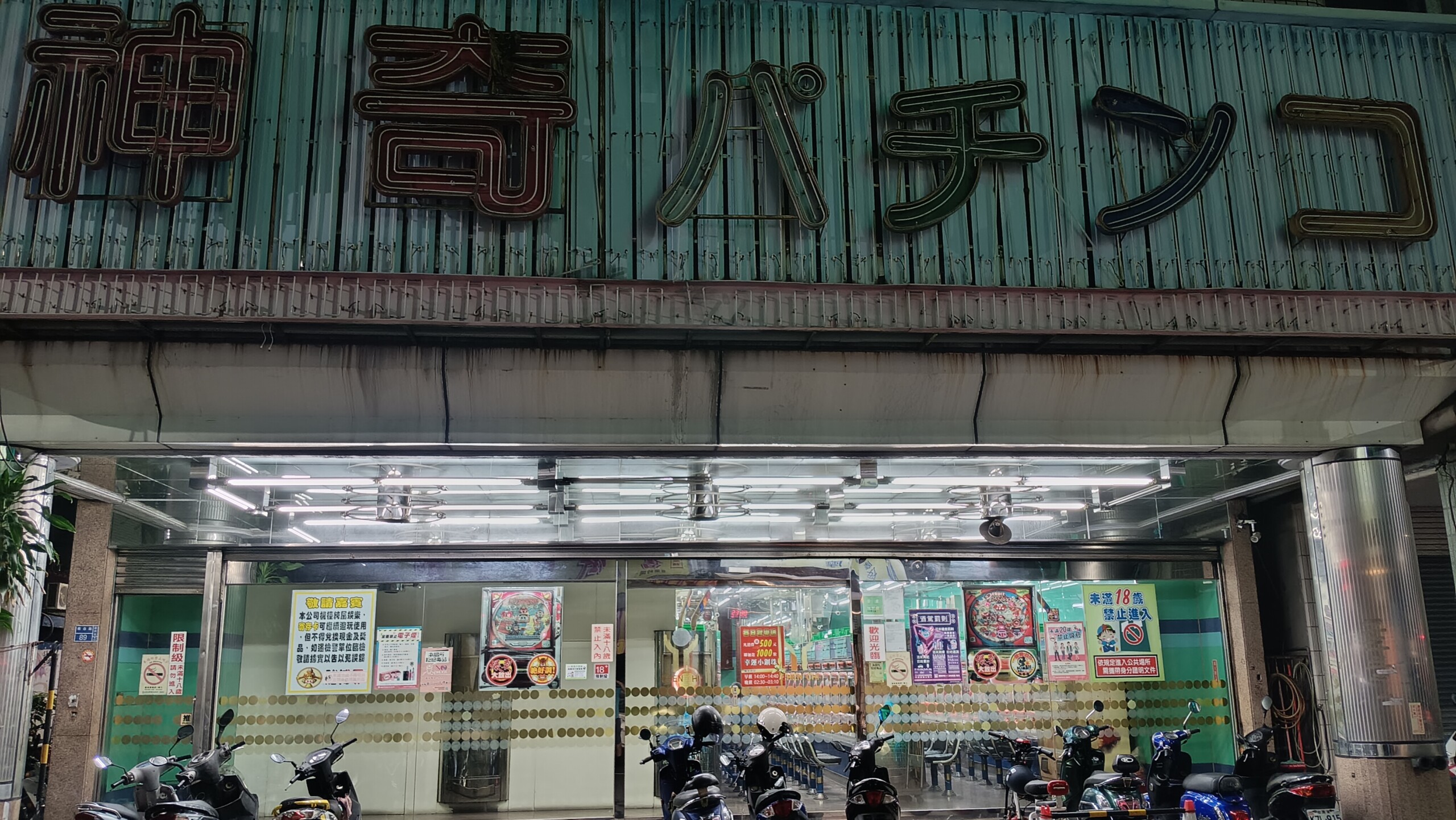
The name of this anachronistic pachinko parlor translates as “magical pachinko.” I walked in, and immediately felt transported to the Japanese bubble economy.
I couldn’t get a photo of the machines — too many staffers — but check out this vending machine:
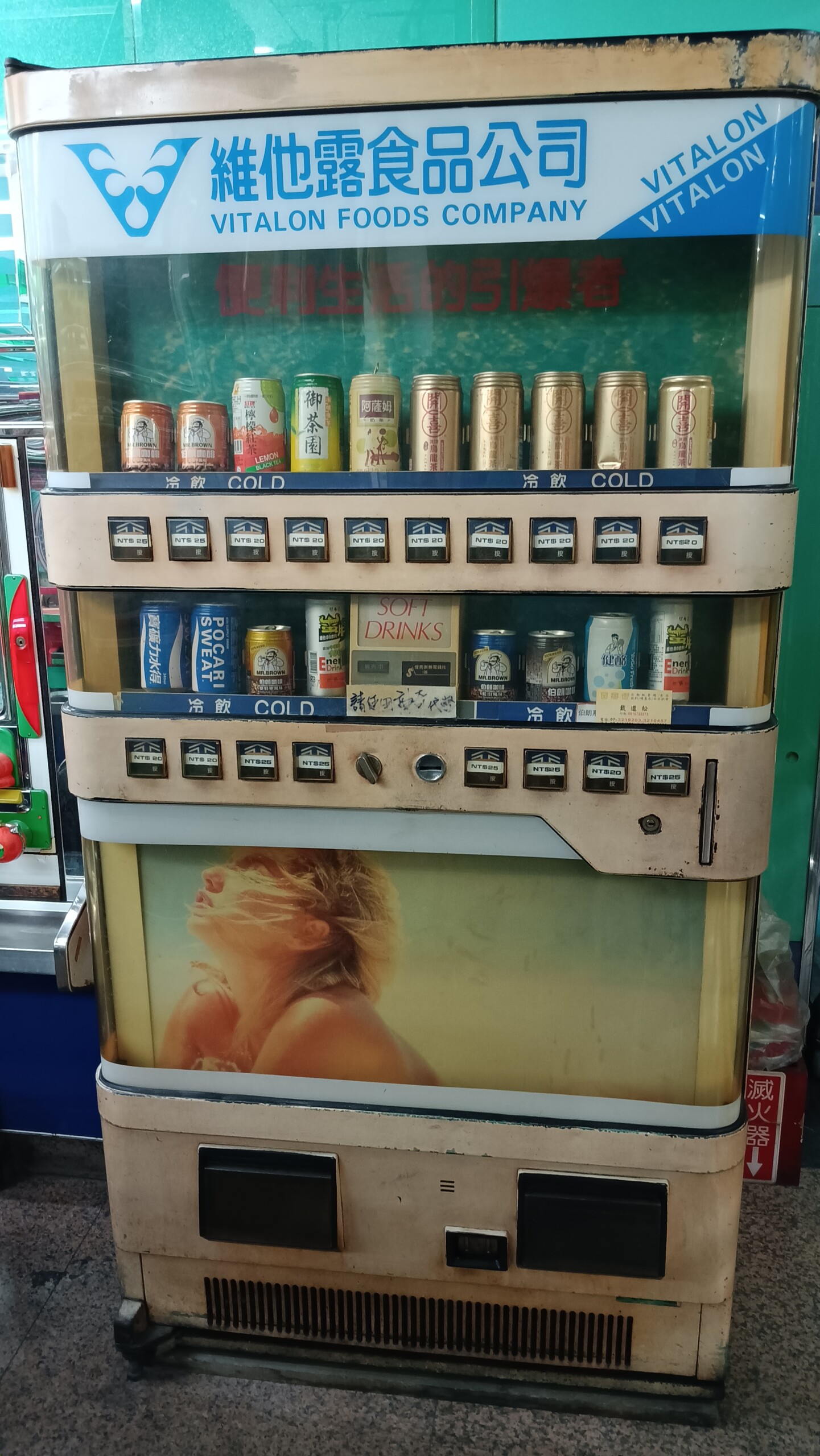
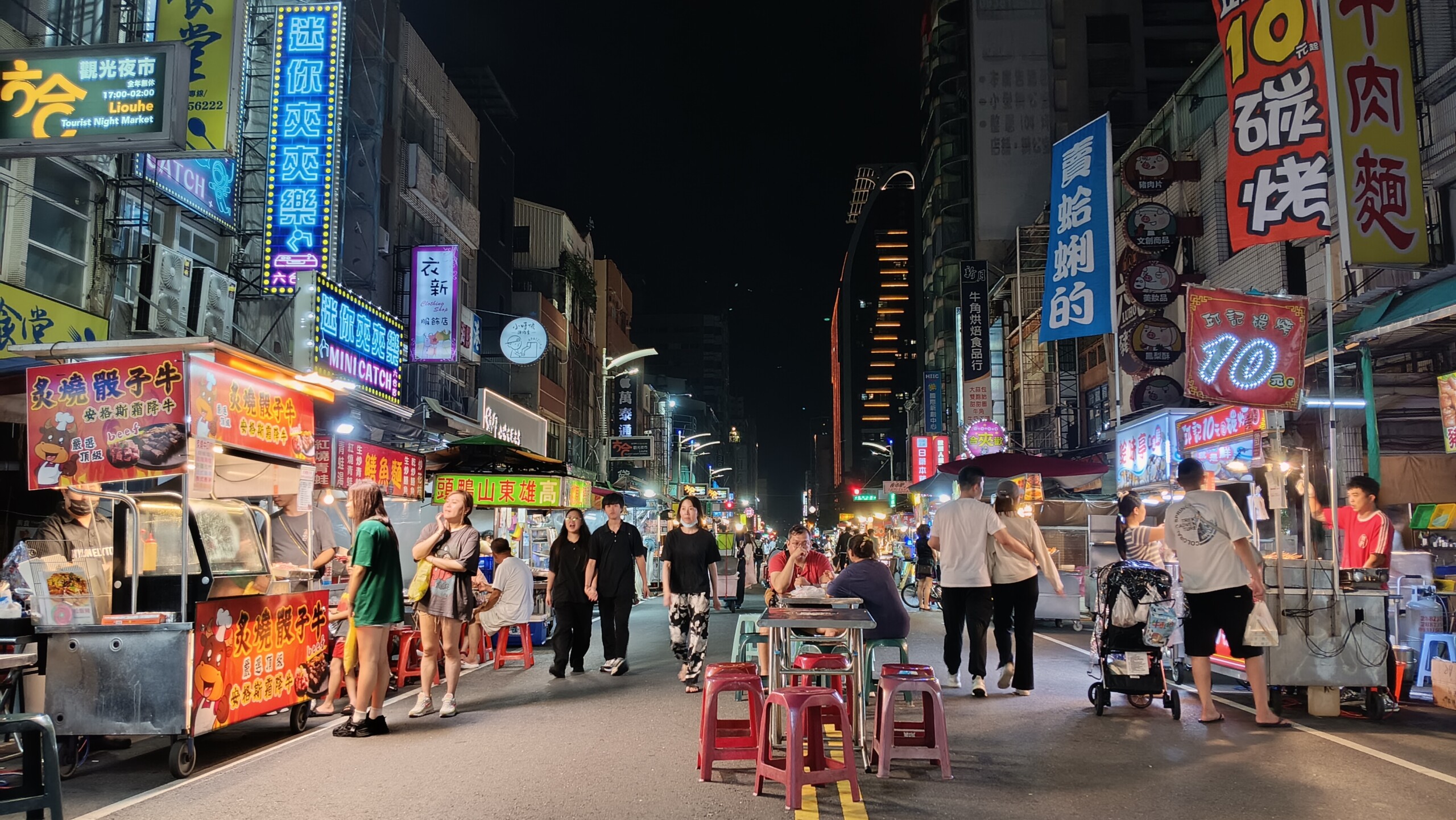
Taiwan is famous for its night markets; above is Kaohsiung’s Liuhe night market.
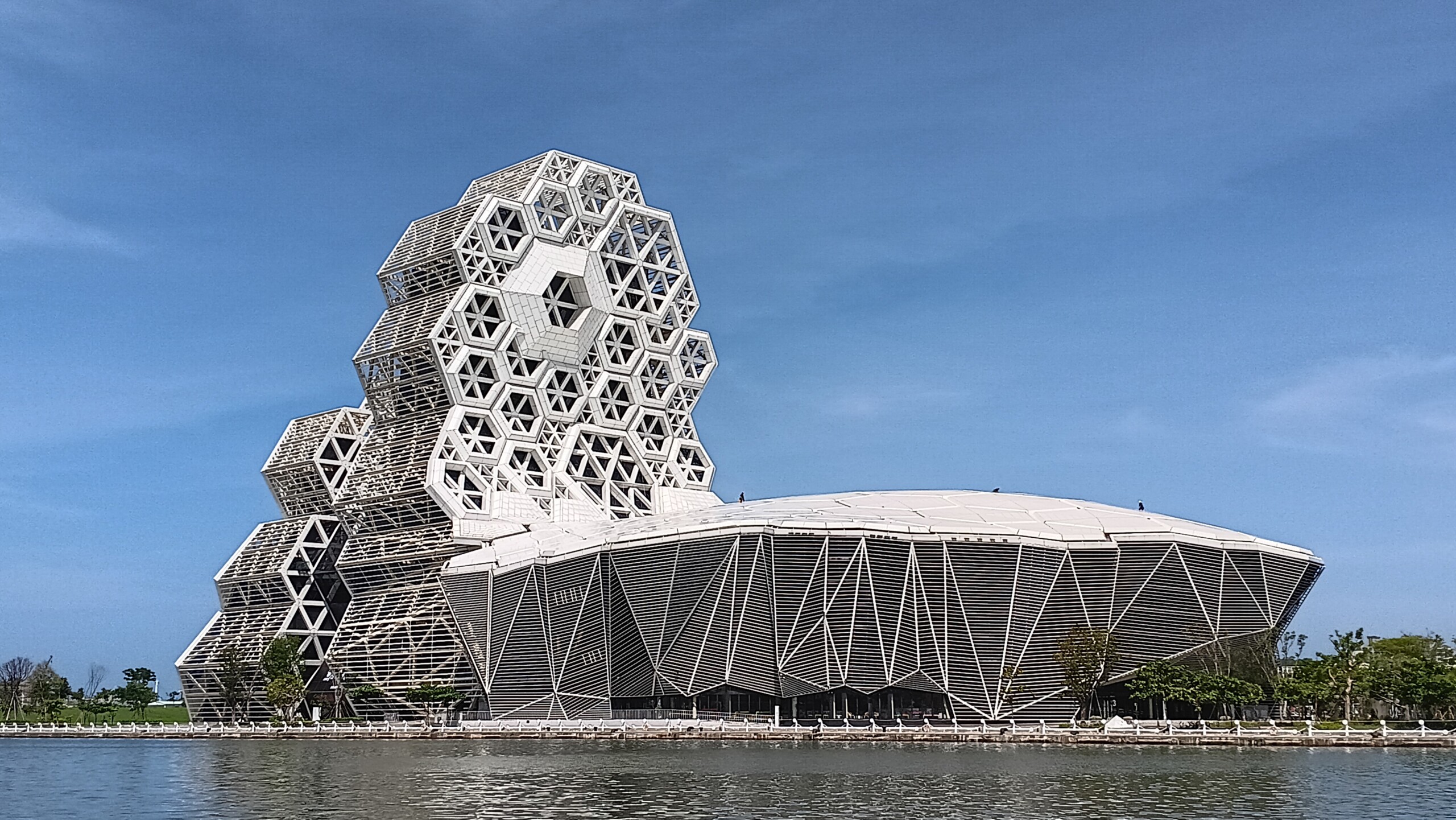
One of the city’s newer landmarks, the Kaohsiung Music Center opened in late 2021. Its design was influenced by various elements found under the sea.

the music center looks like a must see for my next trip.
cromulent…maybe less so inside